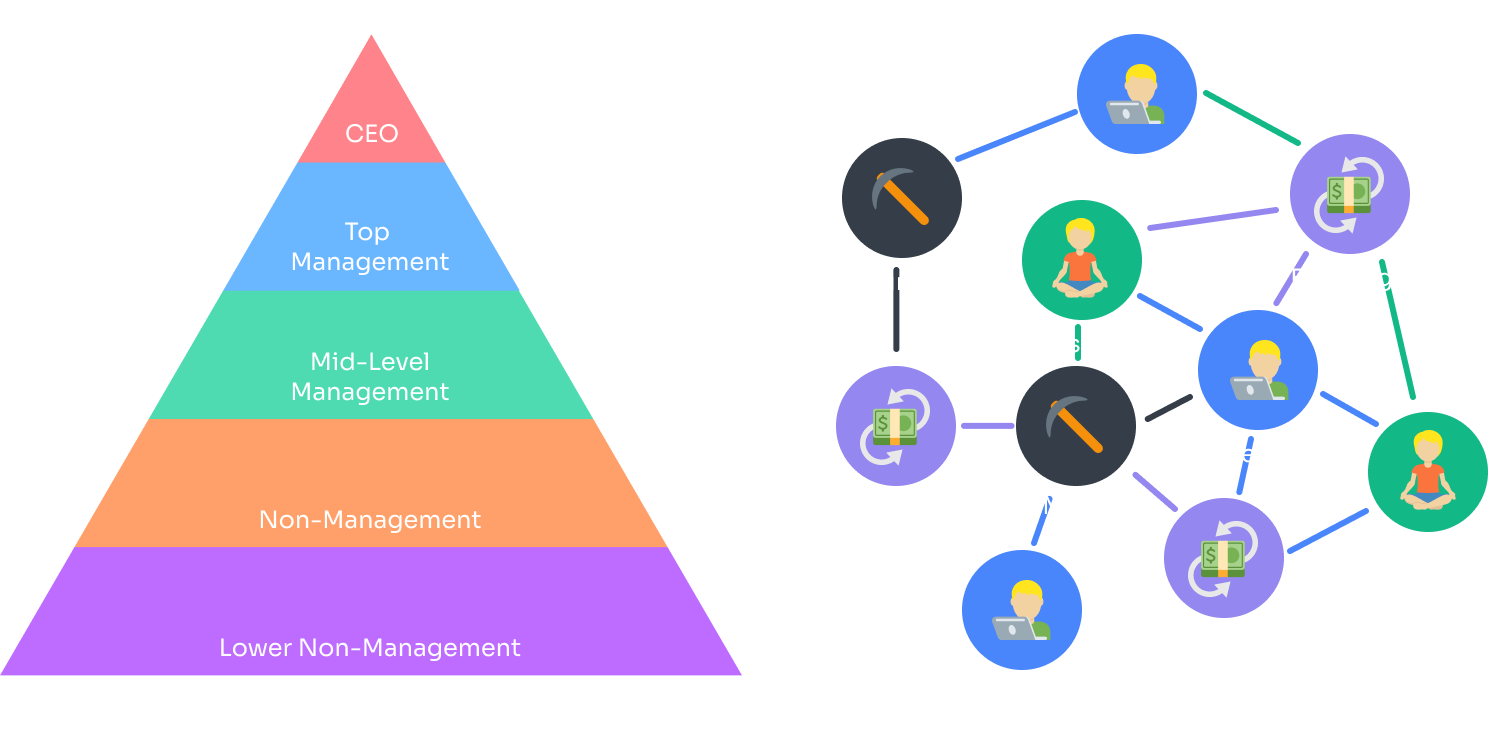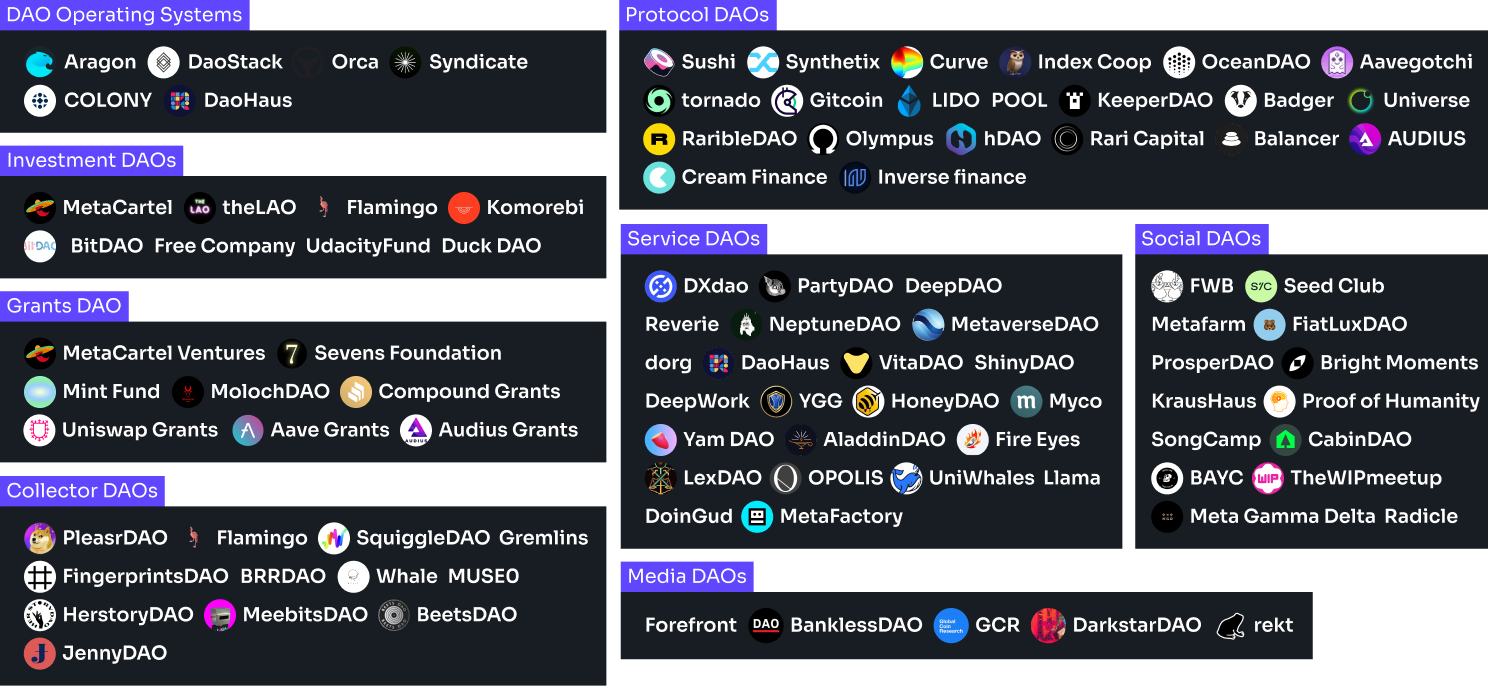What is a DAO? In this article we will be providing the definition, explanation, meaning and examples of decentralized autonomous organizations. Furthermore, how blockchain organizations are operating to change the crypto landscape.
If you’ve been following us at DexGuru or the growth of web3, you would have heard the term “DAO” thrown around quite often. This blog post breaks down the common question “What is a DAO?” and is a follow-up from our latest webinar, which you can find below.
DAOs Defined
According to Wikipedia, a DAO or a decentralized autonomous organization (DAO) is “An organization represented by rules encoded as a computer program that is transparent, controlled by the organization members, and not influenced by a central government.”
The definition unveils an exciting concept, but what does it mean?
DAOs are internet-native organizations collectively owned and managed by their members. When a decision is needed, group members vote on proposals for approval or rejection. These decisions can be funded by built-in treasuries that are only accessible with the support of their members.
So as the definition states, the critical features of DAO are:
- Decentralization; in other words, there is no central authority
- Decisions get made from the bottom-up
- Governed by a community organized around a specific set of rules enforced on a blockchain
- Shared treasury access that is manage collectively
Any large organization requires decisions to be made, and traditionally, these decisions are made top-down, with the CEO being in total control. With a DAO, these decisions are made by having the group vote on proposals submitted by community members. Once consensus is achieved, the action gets put into motion. If needed, the treasury is unlocked to release the necessary funds.

In order to participate in any given DAO, users often have to buy their way in by purchasing a governance token. This can be thought of as buying equity in an organization in order for voting rights.
Past and Present DAOs
The first references to DAOs date back to the 1990s, discussing multi-agent systems and decentralized action in accomplishing social tasks. This topic was left relatively untouched until 2014 when the concept re-emerged due to an article by Vitalik Buterin (Ethereum co-founder). He suggested the term Decentralized Autonomous Organizations (DAO) to describe the ‘holy grail’ of organization types.
Unfortunately, the history of the DAO has not been all sunshine and rainbows, with the infamous DAO hack of 2016, where 12.7million Ether was extracted from a smart contract bug. Thankfully, the Ethereum community moved past this mishap and built the many DAOs we know and love today.
Below are some of the many DAOs at the frontier of the crypto revolution. They are widespread from Social DAOs to Protocol DAOs and beyond. You may have heard of some of the more popular DAOs in the landscape such as Sushi and BAYC. Each of these DAOs operates differently with a unique structure, voting mechanism and goal.

DAO Structures
The inner workings of a DAO are more complex than just a Discord channel full of members holding governance tokens. This breads the question, “What does a DAO need to succeed?”.
On a high level, the typical DAO consists of 3 parts:
- Community: People who assemble
- Governor: Smart contract technological platform that enables making decisions collectively
- Treasury: Shared pool of assets that the community can manage collectively
Similar to traditional organizations, not every contributor has the same role and responsibilities. Some of the most common roles inside a DAO are outlined below.
- Token holders - Community members who own a DAO-specific token that allows them to participate in governance, make decisions and manage funds in accordance with their shares.
- Contributors - Participants who are actively involved in DAO operations. They may have governance rights or may not. For example, they can work for a salary but do not have community tokens to affect the decision-making.
- Sub DAO / Project / Working groups leaders - individuals elected or appointed by the DAO to take responsibility for specific projects and business areas.
Depending on the organization, these roles can change and become more specific to the goals of the DAO.

DAO Operations - Voting
Once a proposal is submitted, members of the DAO are responsible for voting whether to approve the proposal or reject it. However, this isn’t always as easy as a “yes or no” vote. Some popular voting mechanics are outlined below.
- Token-based quorum voting
Quorum voting requires a set amount of voting power to rule for a proposal to pass. An example of this would be for a DAO to require 50% of total members to vote. If less than 50% of members vote, the proposal fails. Otherwise, the decision with the most votes wins. Quorum voting is battle tested with its long history in politics.
- Holographic Consensus
Using a holographic consensus is achieved by associating a prediction market with each proposal. Predictors can stake funds and essentially bet on a proposal’s success or failure. If they predict correctly, they benefit financially. Projects that have used this voting mechanism include DXdao, NecDAO and Prime DAO.
- Permissioned relative majority
Relative majority is a mechanism in which the total number of for and against votes. Unfortunately, this alone isn’t a viable governance option for DAOs due to the ease with which they can be attacked (1 person can quickly drain the DAO’s funds while others aren’t looking). This can be prevented by ensuring that proposals need to be sponsored by DAO members. Projects that have used this mechanism include MetaCartel Ventures, Raid Guild and DAOhaus.
- Conviction voting
Conviction voting is a voting mechanism in which people stake their voting power on proposals, and over time, those proposals accumulate enough votes to pass. Projects that are using this include 1Hive, Panvala, and Commons Stack.
- Multisig
In this voting mechanism, token holders signal on proposals, which are then executed by a more centralized committee that usually controls a Gnosis Safe. The benefit of this approach is that no gas fee is required since the voting process is off-chain.
DAO Operations - Governance
When it comes to how changes are implemented in a DAO, they can either be done technically with on-chain governance or socially via off-chain governance.
On-chain governance allows users to vote directly to change the underlying protocol in blockchain governance. They vote for a code that automatically executes when consensus is reached.
Off-chain governance is when decision-making happens informally—away from the blockchain’s underlying codebase. A network’s stakeholders vie for its control by coordinating through various avenues, including community forums, social media sites, and the project’s official communication channels.
Off-chain governance may seem less reliable, but in practice, it is convenient and provides almost the same level of security thanks to various tools like Snapshot. On top of that, off-chain governance does not require a gas fee which can be high during network congestion.
Whether this is your first exposure to the concept of a DAO, or you are exceptionally well versed in the web3 ecosystem, we can guarantee you’ll see more on this topic later on. Feel free to visit our post on GuruDAO to see how we at DexGuru are creating a decentralized organization built to last.




